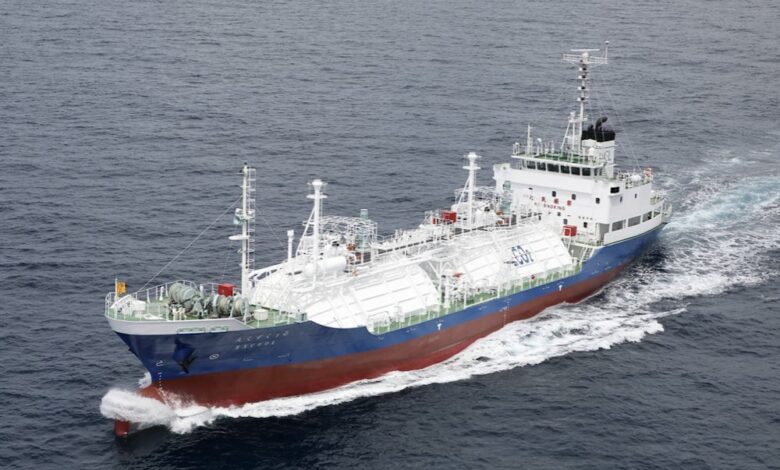
The Shimonoseki Shipyard of Mitsubishi Heavy Industries today handed over a new type of ship for Japanese shipbuilders, a liquefied CO2 carrier, which will serve as a demonstration test ship for a seaborne trade many are predicting will bubble up in the years to come.
With government backing, the Excool was christened today and handed over to its charterer Nippon Gas Line. Among the many partners involved in the research project are Ochanomizu University and Kawasaki Kisen Kaisha (K Line).
The 1,450 cu m ship is 72 m long. It will be used to verify the techniques for transporting and handling liquefied CO2 in tanks under different transport conditions, with the aim of establishing optimal CO2 marine transport technology in terms of the environment, safety, and economic efficiency.
The Excool becomes just the fifth vessel trading around the world today capable of carrying liquefied CO2, all of which are very small. Experts contacted by Splash earlier this year suggest there will be more than 50 far larger liquefied CO2 carriers trading by 2030.
The many nascent seaborne trades such as liquefied CO₂ or hydrogen have given ailing Japanese shipyards a shot in the arm. Japanese shipbuilders were the pioneers for much of the liquefied gas carrier design breakthroughs of the 1970s and 1980s, something they aim to replicate as the world transitions to new energy forms.
